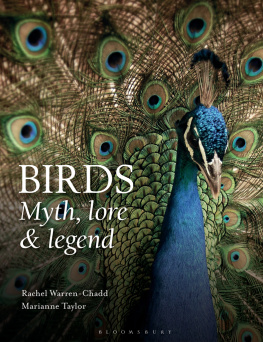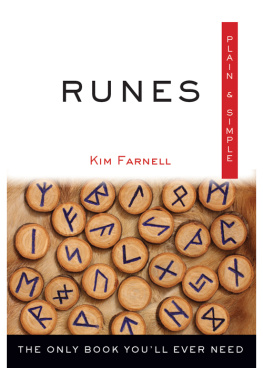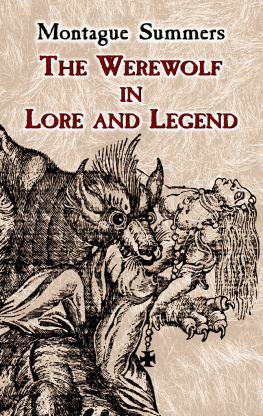Nigel Pennick - Runic Lore and Legend
Here you can read online Nigel Pennick - Runic Lore and Legend full text of the book (entire story) in english for free. Download pdf and epub, get meaning, cover and reviews about this ebook. year: 2018, publisher: Inner Traditions/Bear & Company, genre: Religion. Description of the work, (preface) as well as reviews are available. Best literature library LitArk.com created for fans of good reading and offers a wide selection of genres:
Romance novel
Science fiction
Adventure
Detective
Science
History
Home and family
Prose
Art
Politics
Computer
Non-fiction
Religion
Business
Children
Humor
Choose a favorite category and find really read worthwhile books. Enjoy immersion in the world of imagination, feel the emotions of the characters or learn something new for yourself, make an fascinating discovery.

- Book:Runic Lore and Legend
- Author:
- Publisher:Inner Traditions/Bear & Company
- Genre:
- Year:2018
- Rating:5 / 5
- Favourites:Add to favourites
- Your mark:
- 100
- 1
- 2
- 3
- 4
- 5
Runic Lore and Legend: summary, description and annotation
We offer to read an annotation, description, summary or preface (depends on what the author of the book "Runic Lore and Legend" wrote himself). If you haven't found the necessary information about the book — write in the comments, we will try to find it.
Runic Lore and Legend — read online for free the complete book (whole text) full work
Below is the text of the book, divided by pages. System saving the place of the last page read, allows you to conveniently read the book "Runic Lore and Legend" online for free, without having to search again every time where you left off. Put a bookmark, and you can go to the page where you finished reading at any time.
Font size:
Interval:
Bookmark:
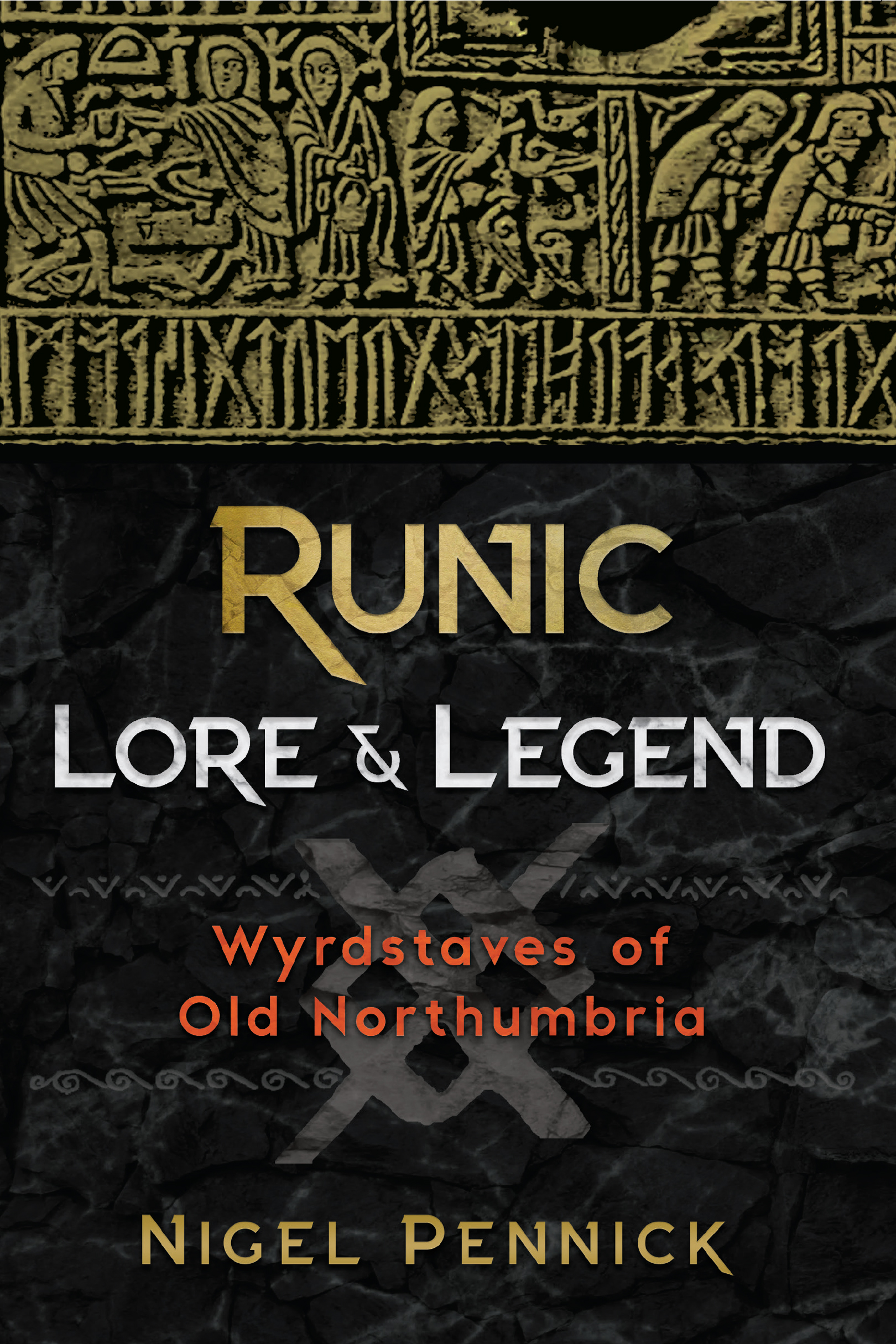
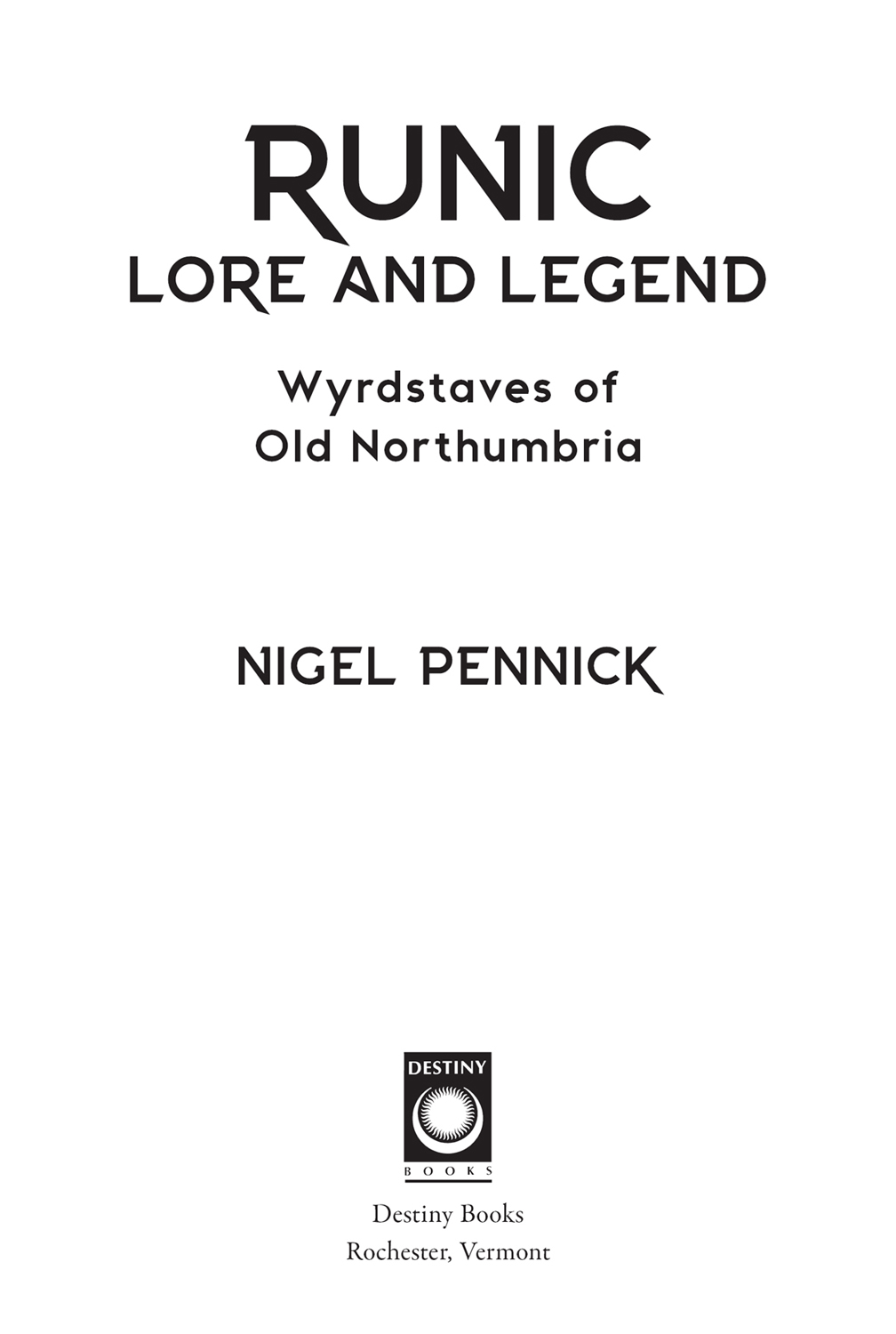
RUNIC LORE AND LEGEND

The magical runes of England have, ironically, been the most neglected of all the runic alphabets in writings in the English language. To have one of the leading authors on the wisdom of the runes pen this comprehensive manual on the Northumbrian wyrdstaves is a most valuable gift to all who follow the Northern Tradition. Pennicks weaving of local history and lore around the runes illuminates his subject in a way that no other book has been able to achieve.
RICHARD RUDGLEY, AUTHOR OF THE RETURN OF ODIN: THE MODERN RENAISSANCE OF PAGAN IMAGINATION
Nigel Pennick is a true initiate who can demonstrate to the reader how nature and cosmos correlate to each other. He explains runes, medieval traditions, and Celtic magic in a pedagogic way that helps us understand how these topics are universalsomething that gives us knowledge about ourselves and is of highest relevance for humankind today. I regularly return to Nigel Pennicks books and am delighted to add Runic Lore and Legend: Wyrdstaves of Old Northumbria to my shelf.
THOMAS KARLSSON, PH.D., FOUNDER OF THE ESOTERIC ORDER DRAGON ROUGE AND AUTHOR OF NIGHTSIDE OF THE RUNES
INTRODUCTION
OUR PICTURE OF PAST TIMES
THE TECHNIQUES OF HISTORY AND FOLKLORE , including the study of the runes, often look at events and artifacts as if they were isolated phenomena with no context from which they emerged. Historical events are often seen as individual facts, and the surrounding physical, social, political, religious, and economic conditions of the time are scarcely taken in to account. Because of this, history becomes a broad picture of a sequence of more or less chaotic events, largely composed of war, conquest, oppression, enslavement, and sudden catastrophic change. Similarly, artifacts that come down to us more or less intact are here because for various reasons they have not been destroyed. Our picture of past times is thus a glimpse of near-random fragments. But from even such fragmentary and almost random records of events, often written down as propaganda for the winning or ruling group, it is possible to discern certain themes that are embedded in the fabric of tradition.
What is ignored by historians in the vast majority of cases is the place that magic has in history. Beliefs and techniques, like those inherent in the handicrafts, can be detected within those fragments we possess. An Anglo-Saxon sword, for example, is the result of more than one and a half thousand years of weapon-smithing using iron. It did not come into existence without incorporating all the knowledge gained by experiment and experience over that time and the traditionspractical, social, and magicalpracticed by the smiths themselves. Similarly, a historical account of an event from any year contains within it all the traditions and beliefs then current, whether or not the agents in the event were conscious of them. There are also overt instances of recorded magic. Through these embedded fragments we can discern the traditions and beliefs continuity through changes in dynasties, regimes, and religions: what changed and what remained essentially the same.
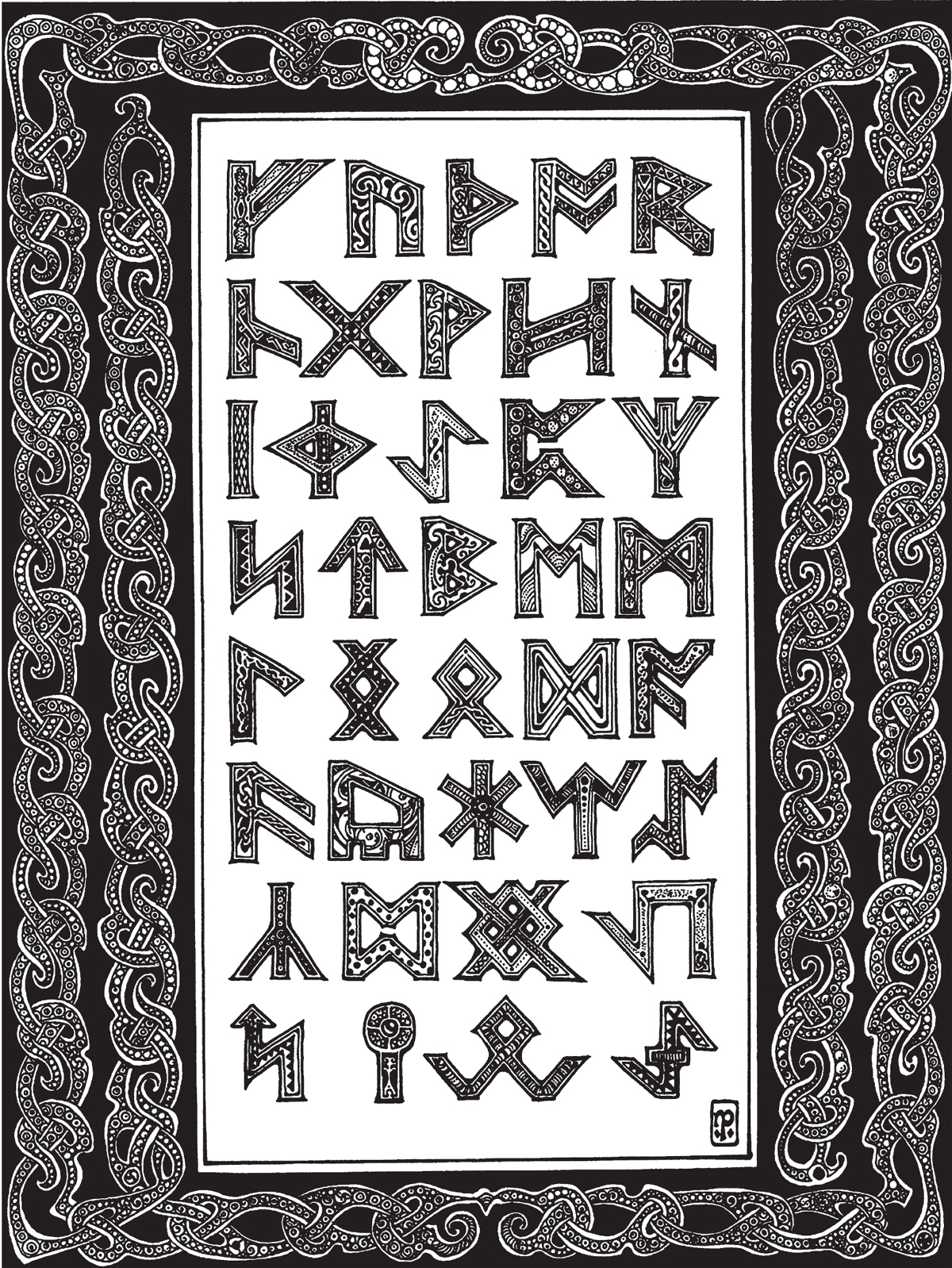
Illuminated runes
This book is about the region of Great Britain known as Old Northumbria. In the early Anglo-Saxon period it was a kingdom in its own right. The physical geography of this part of Great Britain has, of course, scarcely changed in one and a half thousand years. But the political and ethnic boundaries have, time and again. History is a process of constant change; the ethnicities and boundaries of this region have altered an almost bewildering number of times in recorded history. This is certainly the case in the formative years of Northumbria: a long and complex tale of constant change, immigration, warfare, conquest, ethnic mixing, and the emergence of new identities. The Northumbrian runes, unique because they contain elements from all the cultures of the region, came into existence as the result of the emergence of these new identities. Magic also runs as a thread through this history.
Legendary history was the standard way of recording events in former times. Supernatural and magical intervention in human activities is the keynote of the adventures of the ancient Israelites recounted in the Bible. And it is the same in all cultures; each has the tendency to view itself as specially chosen, blessed by some power or deity that somehow marks that family, clan, tribe, race, religion, or nation as in some way better than all the others. Such a literal belief in ones exclusive special-ness closes ones eyes to the fact that the others too believe this about themselves. But going beyond special pleading for godly decrees that specially chooses our group as superior to everyone else, we may learn a lot from this legendary worldview.
Legendary history tells us something about the interaction between humans living in the visible, material world and their relationship to the otherworldly, eldritch realm. In the Northumbrian context it is the Northern Tradition worldview that underlies its legends and history and that is embedded in the Northumbrian runes. This is explicit and implicit in all things done and produced there. Its spiritual heritage is implicit in all of its ensouled culture, having as its basis both a knowledge of and a practice of true principles. Here in the region of Old Northumbria immanence and presence coexist in an integrated tradition without being reduced to an image or a spectacle. If we bring ourselves into contact with this current, it will enable us to bring a symbolic reality into being. It is a reality that has been here as long as anyone knows, located in this particular region. By understanding it we may continually re-create the eternal in the present. This tradition is alive and available now, a fount of creativity for today.
THE KINGDOM OF NORTHUMBRIA
A Brief History
IT IS NECESSARY TO GIVE A BRIEF OUTLINE of Northumbrian history before and during the period when the Northumbrian runes came into being. Relatively little is recorded, for the region suffered repeated warfare for more than a thousand years after the fall of the Roman Empire. So much of the history is the recounting of battles, conquests, and reconquests of territory. The province called Britanniamuch of the island of Great Britainwas part of the Roman Empire from the year 43 CE until about 410. After the rebellion of the Celtic queen Boudicca in 60 or 61 CE, the imperial territory was relatively stable, with occasional economic downturns, until the end of the third century, when a Roman admiral seized power and declared independence from Rome. The island was then reconquered by imperial forces with great destruction and loss of life. Increasing incursions were mounted by raiders from outside the empire: Picts and Britons from north of Hadrians Wall, Scots from Ireland, and Germanic pirates. Some soldiers of the Roman army serving then on Hadrians Wall were also Germanic men from Frisia.
The territory now called Scotland was not Scotland then, because the land of Caledonia was inhibited by three and then four distinct ethnic groupings or nations, each with its own language, just as Britain south of there was not yet England. The Picts, first mentioned in Roman writings in the year 297, appear to have been a group of tribes who spoke a form of the Celtic language. Their kings inherited their position through the female line. Whatever they called themselves, their name refers to their practice of tattooing themselves in honor of the gods and possibly of painting their faces and bodies at times of celebration and of war.
Next pageFont size:
Interval:
Bookmark:
Similar books «Runic Lore and Legend»
Look at similar books to Runic Lore and Legend. We have selected literature similar in name and meaning in the hope of providing readers with more options to find new, interesting, not yet read works.
Discussion, reviews of the book Runic Lore and Legend and just readers' own opinions. Leave your comments, write what you think about the work, its meaning or the main characters. Specify what exactly you liked and what you didn't like, and why you think so.

